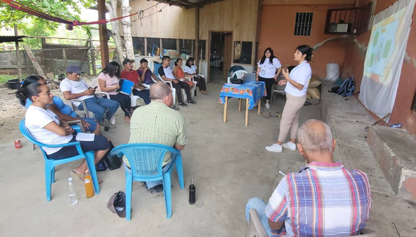2023 Award "Best Practice in Citizen Participation"
17th Edition
Health in Selva Maya
This experience takes place in the six districts that make up Belize, the Department of Petén in Guatemala, and the municipalities of Calakmul and Othón P. Blanco in Mexico.
The Selva Maya includes part of the territory of Belize, Guatemala and Mexico; It represents one of the most important ecological systems globally. However, it is currently threatened by human activities such as livestock and agriculture, which increases the probability of diseases, whether zoonotic (transmitted from vertebrate animals to humans) or by vector (transmitted from insects to humans).
In this sense, and under the Una Salud (One Health) approach, which promotes recognition of the interdependence of animal health, environmental health, and human health, the Salud en Selva Maya project seeks to sensitize, communicate, and educate community level in the Selva Maya region for the prevention of infectious diseases associated with interaction with animals, promoting the participation of the communities that inhabit the Selva Maya for the communication of actions to prevent zoonotic and vector diseases, and generating alliances with government institutions and civil society of the countries of the region that strengthen the prevention of these diseases.
To meet these objectives, the project trained more than 600 people, managing to replicate awareness and knowledge on the subject. Additionally, collaboration agreements were generated with ministries and secretariats of the 3 countries so that the contents taught in the trainings are replicated in health centers and basic level schools, in addition to the methodology for generating communication materials with community relevance being used from now on by these government institutions together with the materials provided by Bios A.C. (manuals, posters, etc).
In this way, it was possible to sensitize community leaders about the risks associated with zoonoses and vectors, prevention measures regarding the subject, and the conditions were created so that health and educational personnel can replicate this strategic information in health centers and classrooms of the basic education sector in the three countries. In this regard, there will be a follow-up of at least one year to ensure that the materials are used and, above all, to be present in case the replicators require support for their use.
Report inappropriate content
Is this content inappropriate?





0 comments
Loading comments ...
Add your comment
Sign in with your account or sign up to add your comment.
Loading comments ...